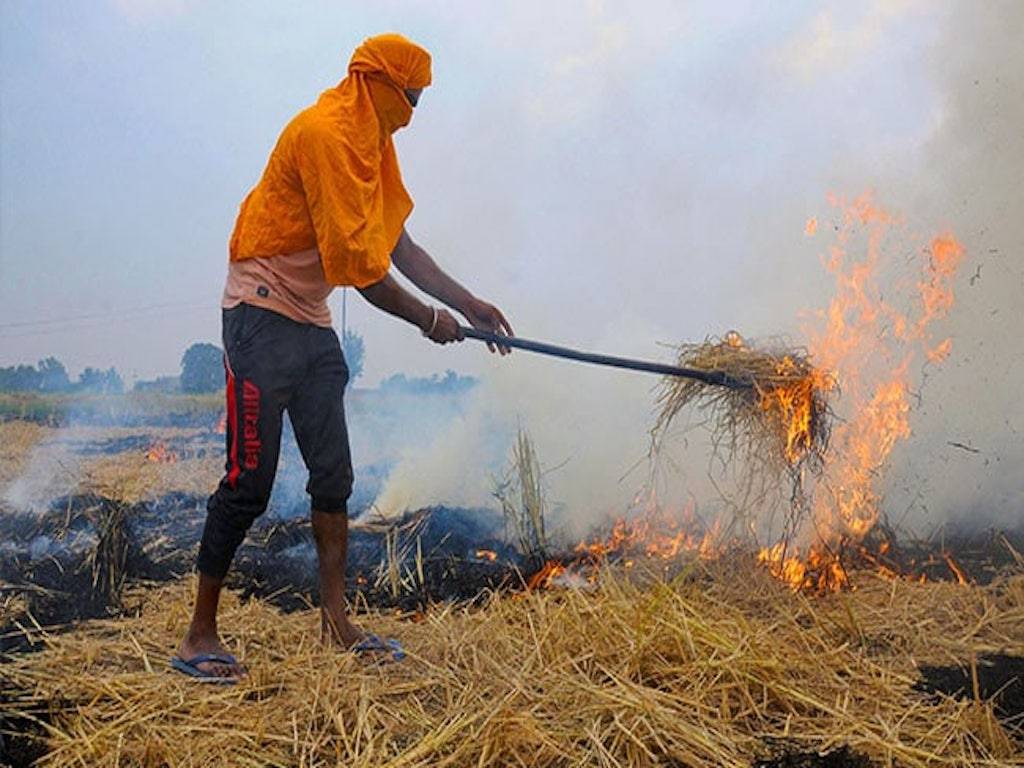
According to officials, air quality in Delhi slid to the "very poor" category on Saturday, with a sharp increase in stubble burning in the last two days leading to a 14 percent increase in the city's deteriorating air.
According to SAFAR, the forecasting arm of the Ministry of Earth Sciences, Delhi's AQI has dropped to the extremely bad level, with PM 2.5 as the primary pollutant.
"Intrusion of stubble-burning-related air mass is caused by favourable meteorological circumstances. With 1,572 effective fire counts, the contribution of stubble burning in Delhi's air has unexpectedly climbed to 14 percent, according to SAFAR harmonised methodology, which includes data from two ISRO satellites.
Fire counts are steadily rising, and the wind direction is favourable for incursion, arriving from the north-west at transport level (900 mb)," SAFAR said.
It did say, though, that rain is anticipated to fall on Sunday, which will improve air quality but keep it in the "poor" category.
Statistics:
According to statistics from the Indian Agricultural Research Institute (IARI), there were 1,948 agricultural fires in the last two days - October 15 and 16 - compared to 1,795 occurrences in the month before to October 14.
In the previous two days, 1,089 farm fires were reported in Punjab, 539 in Haryana, 270 in Uttar Pradesh, 10 in Rajasthan, and 40 in Madhya Pradesh.
The statistics revealed that fire incidents reported within two days are much higher than those reported in the previous ten days up to October 14.
Between October 6 and 14, 1,008 fires were reported in Punjab, whereas 463 fires were reported in Haryana over the same period.
The ventilation index and wind speed in the national capital will be lower than normal in the next two days, according to the Decision Support System (DSS) established by the Indian Institute of Tropical Meteorology-Pune (IITM), which is unfavourable for pollution dispersion.
The air quality is expected to improve as a result of the rains on October 17 and 18, which is favourable for pollution removal, according to IITM. However, the air quality is expected to stay primarily in the moderate category.
Stubble burning in neighbouring states adds considerably to Delhi's air pollution.
Following the new Standard Protocol for Estimation of Crop Residue Burning Fire Events Using Satellite Data, active fire events caused by rice residue burning were observed using satellite remote sensing.
In 2016, 1.02 lakh incidences of stubble burning were registered in Punjab.
From October 1 to November 30, the number dropped to 67,079 in 2017, 59,684 in 2018, and 50,738 in 2019. According to the IARI, there were 79,093 similar instances in the state last year.
Farm fires occurred 15,686 times in Haryana in 2016, 13,085 times in 2017, 9,225 times in 2018, 6,364 times in 2019, and 5,678 times in 2020.









